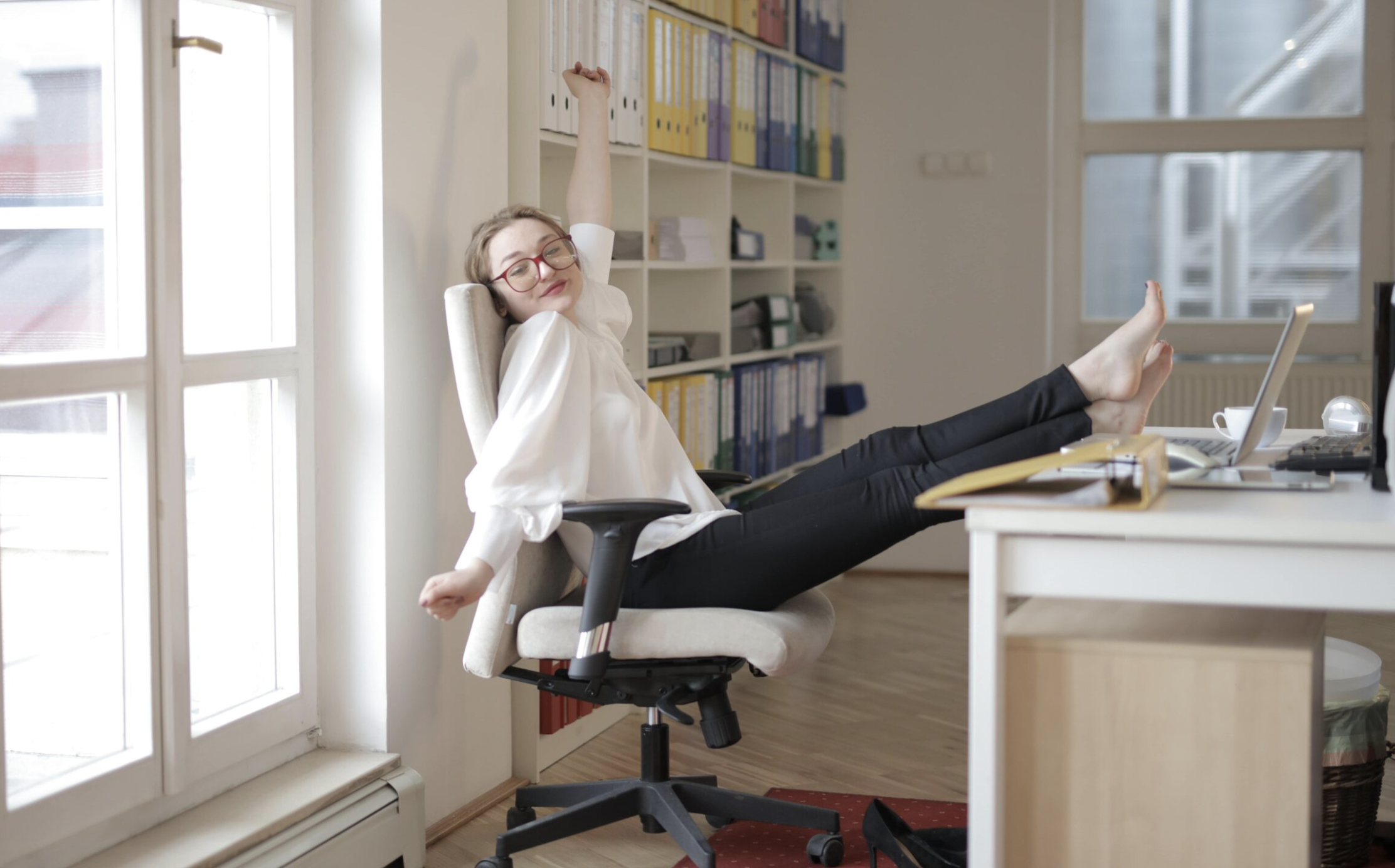Ergonomic chair:
An ergonomic chair is a desk chair that is built in a way that supports spinal curves of the body also known as the “s” shape of the spine. It works to prevent a person from slouching in the chair, putting unnecessary strain on their back. There are usually adjustable backrests on the chair which will further support the unique structure of an individual’s spine, recognising everyone is different in terms of body shape. They will also be adjustable in height, to enable users to meet eye level with their computer screen. This also helps with neck pain as the person will not be tilting their head for a correct view of their screen.
Advantages:
One benefit to an ergonomic chair is that it supports the posture of the individual. Compared to regular desk chairs, the ergonomic chair has adjustable armrests for extra support and comfort. The postural support of the ergonomic chair is not only for when seated but it can help correct posture for long periods of time and train it to stay in the correct position.
When seated upright and in a comfortable seated position, productivity levels are likely to be boosted. When comfortable, people tend to be happier in their place of work, enabling them to be productive with their work.
Ergonomic chairs have supportive padding for the hips, to reduce pressure on this area. They also improve blood circulation. Often when seated for long periods of time, our legs can become numb and pins and needles may come on. With the ergonomic chair, you can adjust the seat to a 90 degree angle, which will improve blood flow to the legs as well as circulation around the body.
Disadvantages:
While the adjustability of the ergonomic chair has benefits to suit certain individuals, it may do damage to others. Looking back into how everyone is different, the curvature of the backrest of the chair may do damage to certain spines and cause more harm than good. They also only allow for restricted movement due to the structure of it. This may cause muscle strain and even muscle spasms. Employees that are much taller than others may find no benefit to the ergonomic chair as it may not even reach the curvature of their spines. An example of how it may do more harm than good by being situated at the wrong area of the spine.
Standing Desk:
A standing desk is a desk that is adjustable in height to allow the user to stand whilst doing work on their computer. It can be adjusted to be eye level with the user as to prevent strain on their back and neck. It is of great use in a classroom setting where a teacher may be more interactive and engaging with the students. Or it may be needed for health benefits when compared to being sat all day at a computer desk.
Advantages:
The first advantage to a standing desk is that it lowers the risk of developing obesity. When you are standing instead of sitting for long periods of time, you are actually burning calories rather than your body storing them and being used as fat in the body. Obesity can lead to complications such as diabetes and heart disease so it is important to consider any changes in the workplace that can prevent this from occurring.
It promotes productivity within the workplace. When sitting comfortably at a desk all day you may not feel like doing too much. Whereas if a person was stood up and moving around they may feel motivated to have their work done and meet deadlines.
The standing desk also helps lower blood sugar levels as energy is being used to remain standing at the computer. This means sugar is not being stored in the body which may cause levels to increase. It is a great substitute chair for people who suffer from diabetes.
Disadvantages:
Although there are benefits to the standing desk, there are also some disadvantages to using one. You may start to experience leg and foot pain after having stood for too long. This is because all the pressure of the weight of your body has been placed to the bottom of your legs/feet for too long. There are some more serious complications that can arise from standing too long. Blood may start to collect in the legs which may lead to a blood clot and further health complications. People may also feel as though they do not need to do any extra exercise as they have been standing all day. However, this is not the case as you will not burn enough calories by standing in one place as you would to going out and getting exercise.
Overall, having evaluated the pros and cons of both the ergonomic chair and the standing desk, it appears the chair would be the most beneficial option to choose. The standing desks can pose a lot more health complications than the chair as well as causing pain in one’s feet and legs. The ergonomic chair has still proven to be a contributor with increasing productivity levels throughout the working day.

